Subscribe to the Newsletter
Your cart is empty
Shop now

Der Greif X MPB: Behind the Image with Marinos Tsagkarakis
Der Greif in partnership with MPB presents Marinos Tsagkarakis, Guest Room Scholarship winner
Der Greif and MPB introduce Marinos Tsagkarakis, who received our Guest Room scholarship from The Sustainable Darkroom & Tamsin Green, curators of our “New Grounds” Guest Room. Tsagkarakis’ selected image is an extract from the series “Strawberry Blue”, exploring the complex interactions between human activity and the environment. His practice investigates the transformation of natural landscapes into artificial environments, highlighting issues of environmental degradation, cultural homogenization, and the loss of authenticity in the modern world.
This format is brought to you in partnership with MPB, the largest global platform to buy, sell and trade used photo and video gear.
Der Greif: Can you tell us the story behind your work selected for Guest Room?
Marinos Tsagkarakis: "Strawberry Blue" (2018–2024) emerged from the profound shifts I experienced after migrating to the European North, leaving behind the familiar comfort of family, friends, cherished memories, and routines. The images in this series were all captured in a park south of my new home – a landscape where, over six years, I sought solace by immersing myself in its subtle details. Drawn to people strikingly different from those I had known, I began to recognize a shared sense of displacement, an unspoken connection rooted in our mutual feeling of not belonging. Their names receded into obscurity, replaced by nicknames I invented, inspired by their stories, scars, tattoos, and striking resemblances to others. "Strawberry Blue" is a reflection on the universal human experience of navigating foreign lands and unfamiliar spaces. Influenced by Bergman’s symbolic use of strawberries, the work invites contemplation on the fleeting nature of time and memory, urging us to savor the moments of sweetness that punctuate our lives.
DG: Can you expand on the themes that your photographic work explores specifically?
MT: My work is driven by a desire to explore the impact of economic development and Western modernization on people's lives, and local societies. Committing to long-term projects that involve extensive research, I seek to approach the themes of the complex sociocultural realities and norms that shape the modern world, like migration, identity and cultural distortion. At the core of my artistic practice is to immerse in the cultures and places I explore, taking the time to experience, observe and learn. By doing so, I aim to create work that is not only visually compelling but also thought-provoking and socially relevant. Through evocative narratives, I intend to contribute with my work to a broader conversation about the role of humankind in shaping our world and the importance of considering the long-term implications of our choices.
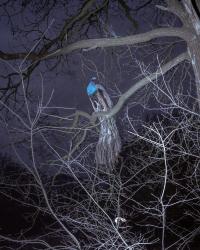
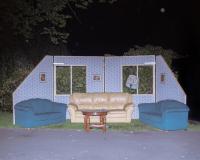

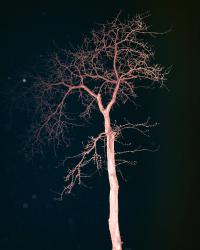



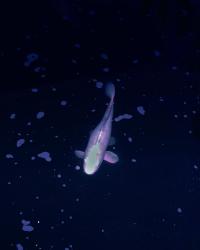
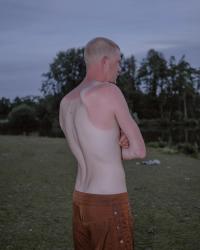
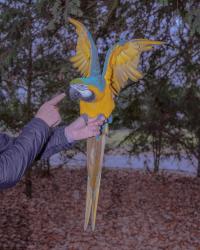
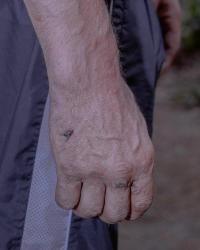















DG: What is the biggest challenge you have faced in photography?
MT: For many years, I felt uneasy photographing people. I vividly remember countless moments when I resolved to take the first step and approach someone, only to hesitate and pull back. Even when I managed to strike up a conversation, my nervousness often got the better of me, leading to photographs that felt like complete failures. “Strawberry Blue” was not just a meaningful project to me: it became an intense exercise in pushing myself to overcome my greatest challenge in photography. Being entirely out of my comfort zone during this period of my life proved transformative, encouraging me to experiment more and more with human portraits.
DG: Who are some photographers who inspire your work?
MT: One of my greatest influences is Lars Tunbjörk. His work resonates with me, particularly for his use of the hard light of flash and his ability to capture the absurdities of modern life with a casual, almost effortless touch. These qualities have subtly found their way into my own practice. Another significant influence is Vanessa Winship. I deeply admire her strong and poetic narratives, as well as her unique ability to balance documentary-style storytelling with a sense of intimacy. Her body of work, especially “She Dances on Jackson,” is a profound inspiration, weaving together landscapes, communities, portraits, and fragments of memory in a way that feels both personal and universal. Additionally, I draw inspiration from other artistic disciplines, including cinematography, music, and painting. The works of Aki Kaurismäki, Roy Andersson, and Robby Müller are particularly influential, offering invaluable insights into visual storytelling, atmosphere, and the interplay of light and emotion.
DG: What are you working on right now?
MT: I am currently finalizing my latest project “Strawberry Blue”, and preparing to transform it into a publication. At the same time, I am research for my next long-term project taking inspiration from the history of Eindhoven, the city where I currently reside in the Netherlands. For over a century, Eindhoven has been a hub of industrial innovation, largely driven by the firm Philips. The remnants of its industrial heritage, juxtaposed with its sprawling urban landscape, serve as a compelling backdrop for exploring how this legacy continues to shape the city’s identity today.
DG: What kind of gear do you work with?
MT: Most of my work so far has been created using an analog medium format Mamiya 7 paired with a 65mm Mamiya lens – a true gem that I’ve cherished for over twelve years. In the past three years, however, I’ve increasingly incorporated a digital medium format camera into my practice, specifically the Fujifilm GFX 50 Series.
DG: What was the first camera you ever used?
MT: This is easy to remember since I still own it: an analog SLR, the Olympus OM-2 in sleek black, paired with a 50mm Olympus Zuiko lens. I consider it one of the most beautifully designed objects. I love its clean, elegant lines, the glossy black finish, and the cool touch of metal in my hand.
DG: What do you look for/value in your gear today? Any thoughts on used gear?
MT: I’ve always enjoyed buying second-hand cameras, both analog and digital. I value reliability and accuracy, and I tend to stick with the same gear for many years. For me, it’s essential that my camera is in excellent condition and always ready to shoot. That applies to my peripherals, like flashes and tripods, which I maintain with the same care. I’m not the kind of photographer who frequently upgrades or changes gear. However, I do have a passion for collecting film cameras, even if I don’t use them regularly. What fascinates me is finding equipment that’s thirty or forty years old yet looks and functions like new. In a way, I feel like I’m giving these cameras a second life. Among my collection, some of my favorite pieces are the Mamiya 7, Olympus XA, Olympus mju II, Leica Mini II, and Contax G1.
DG: Can you tell us what this scholarship means for you?
MT: Receiving this scholarship is incredibly meaningful to me, especially since it comes from Der Greif, one of the most influential platforms for contemporary photography, and a jury as esteemed as Hannah and Alice from The Sustainable Darkroom and Tamsin from SSP. Above all, it serves as a form of positive feedback and validation for the quality of my latest and current work. Like many artists, I often grapple with second thoughts and doubts about my practice, so this recognition not only supports me in finalizing my project but also provides a much-needed confidence boost.
In partnership with our Guest Room partner